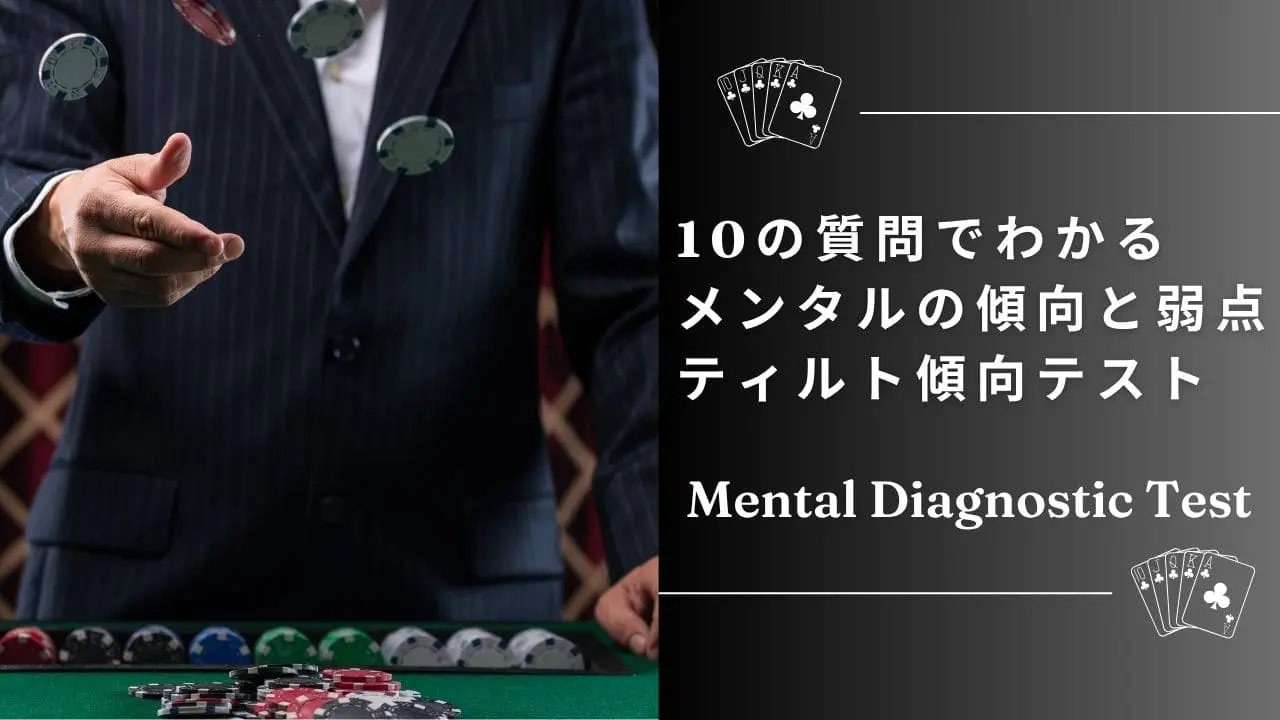Poker is a game of both luck and skill—but emotional control might be the most underrated factor of all. Among emotional pitfalls, tilt—the loss of rational thinking due to frustration or bad beats—is particularly destructive. It turns solid play into a downward spiral of mistakes and losses.
Do you tend to tilt? Let’s find out with a quick 10-question self-diagnosis checklist designed to highlight your mental tendencies at the table.
What Is Tilt in Poker?
Tilt refers to a mental state where a player, affected by bad luck, loss, or frustration, makes emotionally charged and irrational decisions. It undermines even the best strategies and skillsets. Common symptoms include:
- Making -EV plays due to frustration
- Taking unnecessary risks to recover losses
- Letting anger or self-blame derail your game plan
Before you can fix tilt, you need to recognize it. The following checklist will help you determine your susceptibility.
Tilt Self-Diagnosis Test: 10 Yes/No Questions
Answer “Yes” or “No” to the following. The more “Yes” answers, the higher your tilt tendency.
- Do you find it hard to stay calm after a bad beat?
- Do you feel a strong urge to chase losses immediately?
- Do you get especially angry when you lose to a weak opponent?
- Do past mistakes frequently pop into your mind mid-session?
- Do your opponent’s actions or table talk distract you?
- Do you believe “winning is the only thing that matters”?
- Does a single misplay lead to self-loathing?
- Have you ever played longer than planned to recover losses?
- Do regret and self-criticism linger after a session?
- Do you change hand selection or bet sizing when emotional?
How to Interpret Your Results
- 0–2 Yes → Emotionally Stable
- You’re mentally resilient and rarely tilt. Keep up with note-taking and self-monitoring habits.
- You’re mentally resilient and rarely tilt. Keep up with note-taking and self-monitoring habits.
- 3–5 Yes → Moderate Tilt Risk
- You may experience emotional swings in pressure spots. Establish consistent routines and take breaks during sessions to remain composed.
- You may experience emotional swings in pressure spots. Establish consistent routines and take breaks during sessions to remain composed.
- 6+ Yes → High Tilt Susceptibility
- You’re highly prone to tilt. It’s crucial to take action now. Start with emotional awareness and structured mental training such as meditation, journaling, or EV-focused thinking.
3 Practical Tilt Management Techniques
1. Shift to EV-Based Thinking
Focus on expected value, not short-term results. When you ask, “Was this +EV?” instead of “Did I win?”, you reduce emotional swings and adopt a long-term mindset.
2. Build Pre/Post-Session Routines
- Stretch or breathe deeply before playing
- Remind yourself: Today’s goal is to make EV-positive decisions
- After the session, write down reflections on both emotion and decision-making
These rituals help reinforce consistent, emotionally balanced gameplay.
3. Identify and Track Your Emotional Triggers
Tilt is often predictable. Record the following after each session:
- When did you feel anger or frustration?
- What situations led to poor self-control?
- How did it affect your play afterward?
Keeping a “Tilt Journal” makes it easier to spot patterns and develop preventative strategies.
Conclusion: Master Tilt, Master Poker
No matter how sharp your strategy is, it won’t matter without clear-headed execution. Tilt is one of the most powerful forces separating long-term winners from the rest.
Understanding your emotional patterns is the first step to mastering them. Use the self-diagnosis test and strategies above to strengthen your mental game—a key skill for any serious poker player.
Winning consistently isn’t just about cards—it’s about composure.


